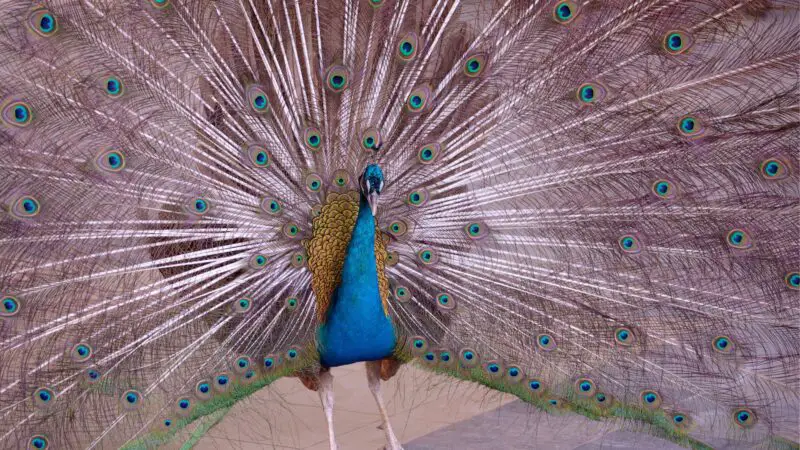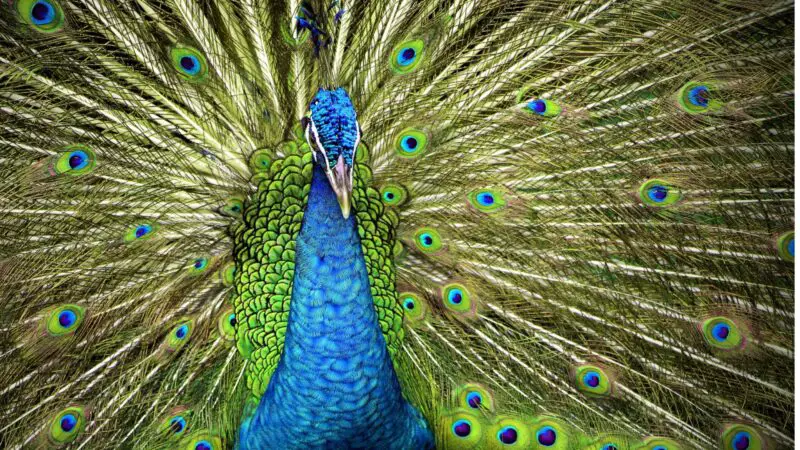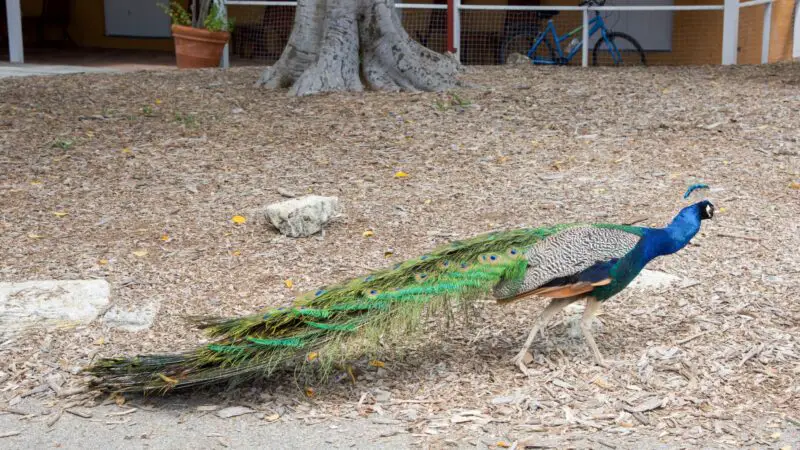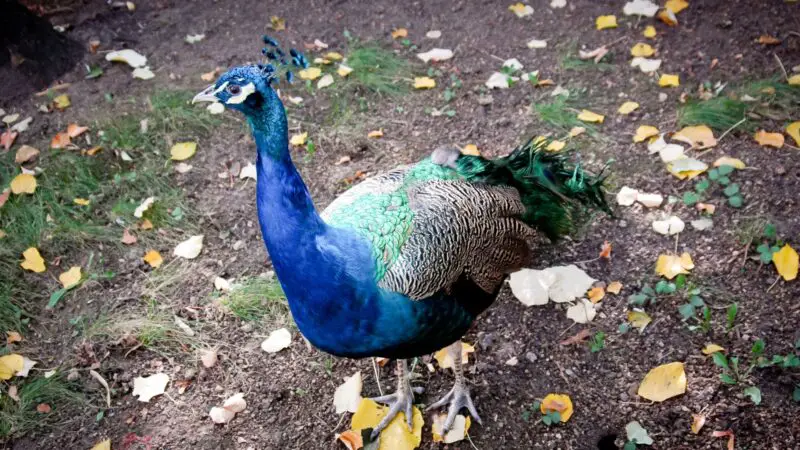Purple peacocks are not naturally occurring in the wild. They are a result of selective breeding and genetic manipulation to produce the unique purple hue. The Indian Blue Peafowl (Pavo cristatus) is the most common species used in such breeding programs.
Dive into the world of purple peacocks and explore their unique characteristics, appearance, and origins. By reading on, you’ll learn about their lifespan, where to find them, and if they’re endangered. Also, uncover the answers to related questions and discover how you can add one to your own flock.

Are Purple Peacocks Real?
Yes, purple peacocks are real, but they are not a naturally occurring species. Breeders have developed the purple coloration through selective breeding and genetic manipulation, using the Indian Blue Peafowl as a foundation.
What Do Purple Peacocks Look Like?
Purple peacocks boast a striking appearance, with a rich purple hue covering their body and feathers. Their plumage can vary from deep, royal purple to more delicate lavender shades. They possess a gorgeous, iridescent sheen that adds depth and dimension to their eye-catching color.
What Is the Lifespan of Purple Peacocks?
Purple peacocks have a lifespan similar to that of their Indian Blue Peafowl counterparts, which ranges from 15 to 20 years. Proper care, a nutritious diet, and a safe living environment contribute to their longevity and overall health.

Where Can You Find Purple Peacocks?
Purple peacocks are not found in the wild, so you’ll need to look for them at private breeders, aviaries, or exotic animal farms. Some zoos and wildlife sanctuaries may also house these magnificent birds. Keep in mind that because they are a product of selective breeding, they might not be as widely available as other peafowl varieties.
Where Do Purple Peacocks Come From?
Purple peacocks originate from selective breeding practices among peafowl enthusiasts and breeders. The Indian Blue Peafowl is often used as a base for creating this unique color variation, and breeders manipulate genes to develop the purple plumage that sets these birds apart.
Can You Breed a Purple Peafowl?

Yes, you can breed a purple peafowl, but it requires careful planning, genetic understanding, and selective breeding techniques. It’s essential to work with an experienced breeder or consult reliable resources to ensure the health and wellbeing of the offspring.
How Much Is a Purple Peacock?
The cost of a purple peacock can vary greatly depending on factors such as age, gender, and the reputation of the breeder. Purple peacocks are considered a more exclusive and rare variety, so they may be more expensive than other peafowl types. Prices can range from a few hundred to several thousand dollars per bird.
Where Can I Buy Purple Peacocks?
You can buy purple peacocks from reputable breeders, exotic animal farms, or through online classifieds and specialized websites. Be sure to research the breeder or seller thoroughly and ask for references to ensure the bird’s health and wellbeing.
Are Purple Peacocks Endangered?
Purple peacocks are not endangered since they are a product of selective breeding and not a naturally occurring species. However, it is essential to support ethical breeding practices and maintain the health and wellbeing of these unique birds.
Related Questions

What Is the Rarest Color of Peacocks?
The rarest color of peacocks is the charcoal peacock, which features a striking mix of black and silver-gray feathers. This coloration is extremely rare and highly sought after by collectors and enthusiasts.
Do Peacock Feathers Fade?
Peacock feathers can fade over time due to exposure to sunlight, age, and other environmental factors. Regular preening and molting help maintain the vibrancy of the bird’s plumage.
How Can You Tell a Male From a Female Peacock?
Males, known as peacocks, have long, colorful tail feathers called a “train,” while females, called peahens, have shorter, more muted plumage. Additionally, males are typically larger and more colorful than females.
Related: What’s the Difference Between Male and Female Peacocks? | All You Need to Know!
Final Thoughts
While purple peacocks are not found in the wild, these stunning birds have captivated enthusiasts and breeders alike. Their mesmerizing color and unique origins make them a fascinating addition to any aviary. Remember to prioritize ethical breeding practices and responsible care when acquiring one of these beautiful creatures.
Related: White Peacocks: From Their Unique Appearance to Breeding and Habitat
